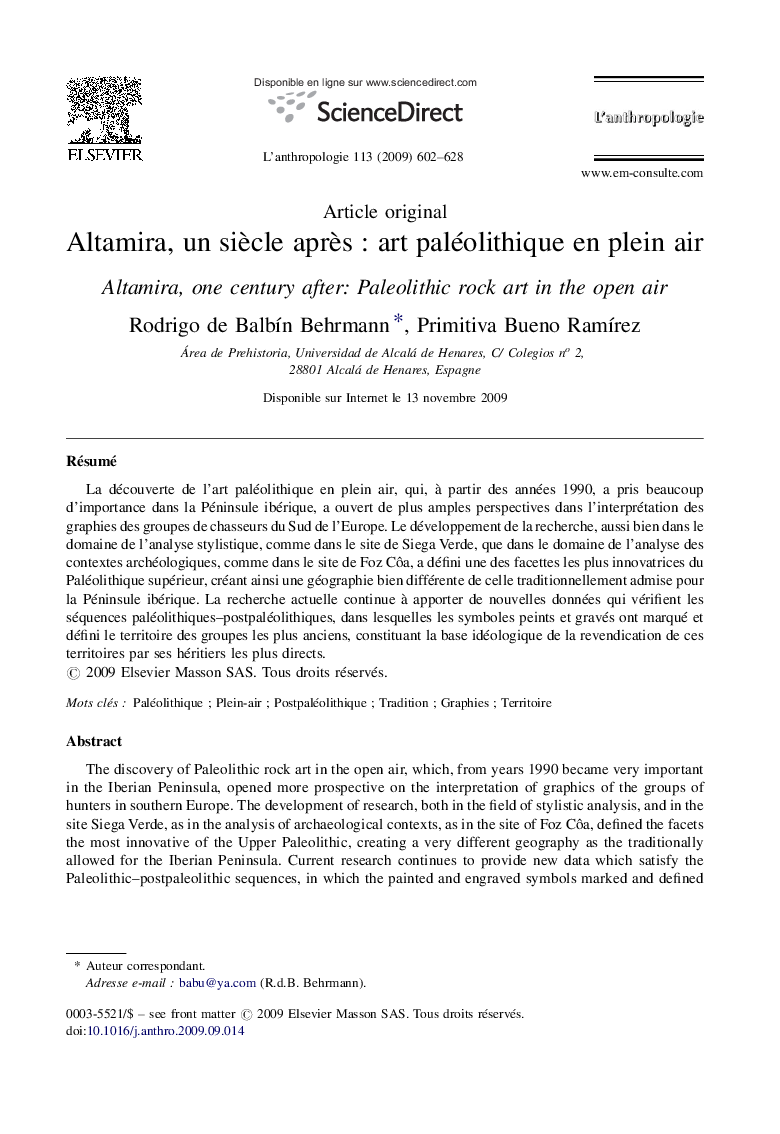| Article ID | Journal | Published Year | Pages | File Type |
|---|---|---|---|---|
| 1033778 | L'Anthropologie | 2009 | 27 Pages |
Abstract
The discovery of Paleolithic rock art in the open air, which, from years 1990 became very important in the Iberian Peninsula, opened more prospective on the interpretation of graphics of the groups of hunters in southern Europe. The development of research, both in the field of stylistic analysis, and in the site Siega Verde, as in the analysis of archaeological contexts, as in the site of Foz Côa, defined the facets the most innovative of the Upper Paleolithic, creating a very different geography as the traditionally allowed for the Iberian Peninsula. Current research continues to provide new data which satisfy the Paleolithic-postpaleolithic sequences, in which the painted and engraved symbols marked and defined the territory of the oldest groups, constituting the ideological basis for the claim of these territories by the heirs more direct.
Related Topics
Social Sciences and Humanities
Arts and Humanities
History
Authors
Rodrigo de BalbÃn Behrmann, Primitiva Bueno RamÃrez,
